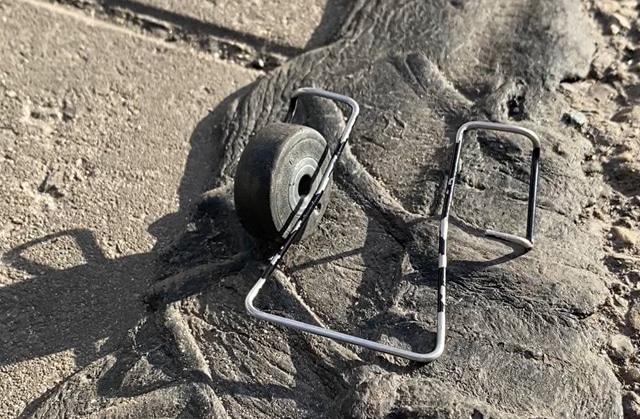Crude Hints
A speculative crafts studio with Sam Jacob. Thu 25 / Fri. 26 / Sat. 27 May 2023

When John Soane wanted to describe the house he designed for himself, he used a strange narrative device. He imagined his home being found in a state of ruin in the future. He imagined what those future archaeologists might make of what they found. He was setting his work both in the future and the past, in a way reflecting how he himself approached the act of design. All those fragments of history - real and replicated - that adorn the surfaces of his home. All those historical references that infuse his work that are put together in unexpected ways. All that learning and thinking about the past in order to construct the near future.
Distancing is an interesting critical device. We know it often from science fiction, where imagined futures are often ways of interrogating the present. The fiction a way of narrating a more direct truth than perhaps realism permits.
This is a workshop that uses the same kind of devices. We will imagine ourselves as some kind of future beings encountering the present moment as if it were entirely unfamiliar. We will use that imagined unfamiliarity as a way to try to see clearly what the present might actually be(or rather what it could be. Perhaps the present is as hazy and unknown as both the past and the future. Perhaps by using tools more often associated with looking at the past and the future, we will be able to reveal aspects of the contemporary that otherwise remain unseen..
COURSE OUTLINE
On the first day we will visit 3 different locations in the city, looking to discover, find, loot, acquire (depending on how you frame your own amateur-archeological practice. Do you identify with one or the following, for example : Indiana Jones, Lara Croft, Howard Carter, Lord Elgin, Arthur Evans etc). Consider how your own engagement with the site transforms the site, how the way in which you act on the world frames the world, the way you see alters what is seen. We are looking for objects with ‘significance’. Though what ‘significance’ looks like is an open question. The significance we want is something like a deep resonance, a way in which an object, or fragment of an object, suggests something much larger. The way something small can suggest a greater meaning. You will record your findings as field notes which give context to the find - allowing researchers to understand the objects relationship to the world, or the behaviours or customs related. We will set out your finds systematically, tagging them with a label including a reference number that allows the objects to be cross referenced easily.
On the next day we will examine the finds table. What is is made from? What techniques might have been involved in its production? What marks or traces reveal how the object may have been used by the society and its people? Where might it have been made? What do these physical attributes suggest about the society that produced and used the object/ (eg organisation of labour, management of resources, the kind of economy, social organisation, power structures and governance that might be necessary in order to manifest such attributes). Consider the object(s) in context - what might this reveal about the purpose or rituals it may have been part of. How does space and context help locate significance?
On the last day we will look how ideas about the past are communicated? The media that make things impossible to experience or access directly more immediate? Will you present the objects in a museological way were the past is assembled as a series of scenes, frozen in time? Do we need performance or theatre where contemporary experience is intended to allow a physical and direct understanding of the past through the body, labour, senses etc? Or will we use means of illustration, like ‘artists impression’, narrative, cinematic language?
PROGRAMME
Thursday 25 May
10:00 - 10:30 Welcome and introduction
10:30 - 11:45 Presentation by Sam Jacob, briefing on the assignment
11:45 - 15:00 Field research, visit 3 locations
15:30 - 16:30 Set-up the finds table
16:30 - 18:00 Film screening: Chariots of the Gods
Friday 26 May 2023
10:00 - 11:00 Examine the finds table, select objects
11:00 - 12:30 Work on the Ritual
12:30 - 13:30 Lunch Break
13:30 - 16:30 Work on the Reconstruction
18:00 - 22:00 School’s Out! Public Lecture by Sam Jacob
Saturday 27 May 2023
11:00 - 12:30 Developing a presentation format
12:30 - 13:30 Lunch
13:30 - 15:00 Set up presentation
About Sam Jacob
Sam Jacob is the founder of Sam Jacob Studio for architecture and design - a collaborative practice that makes buildings, places, strategies and objects. He is professor of architecture at UIC and visiting professor at Yale School of Architecture. Sam was co-curator of the British Pavilion in Venice (2014), is columnist and critic for Dezeen and Art Review as well as Contributing Editor for Icon magazine. Previously, Sam was a founding director of FAT Architecture.